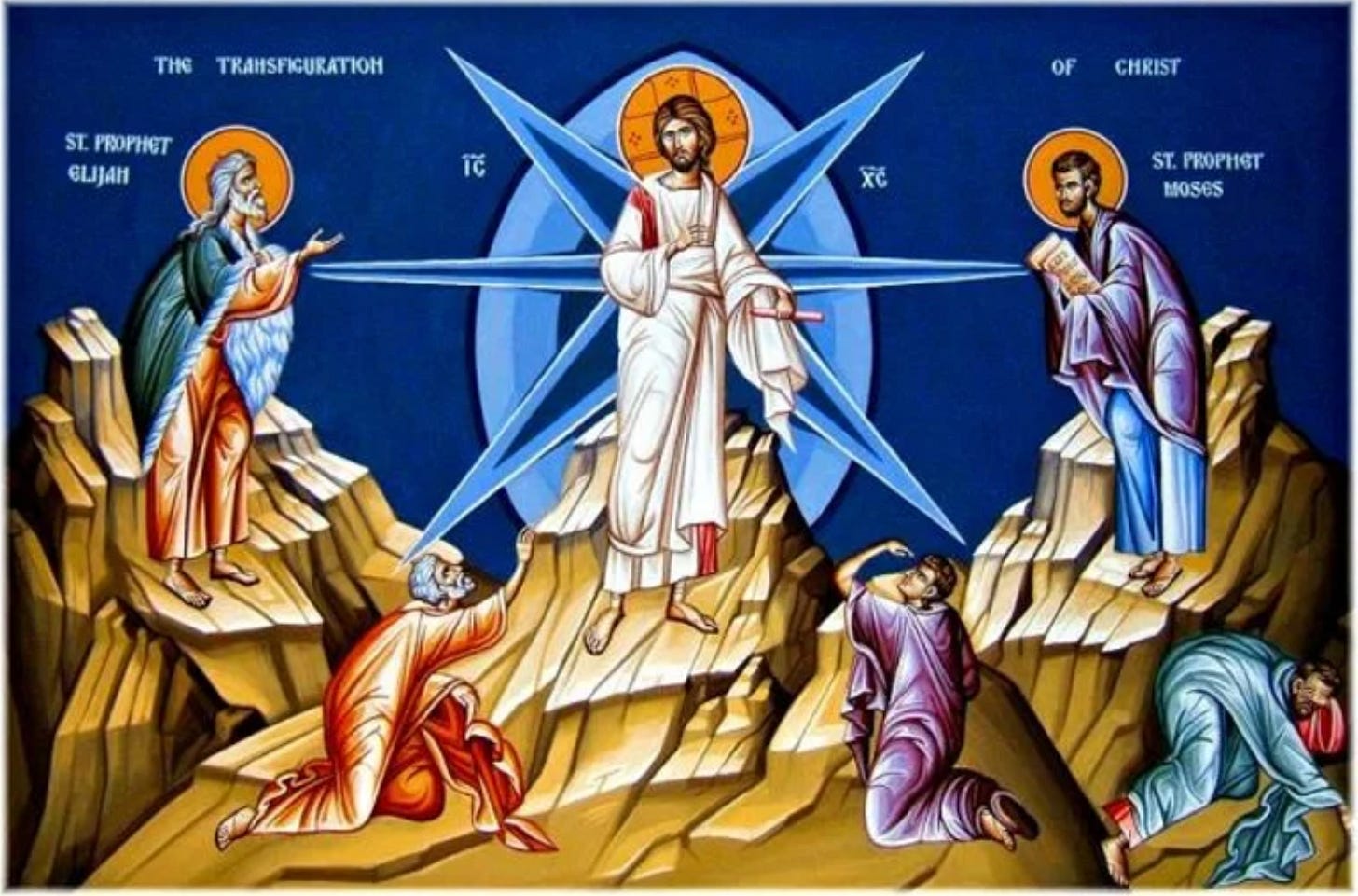“Thus though art also the fountain of true light, the inexhaustible treasury of life itself, the most fruitful source of blessing, who has won for us and brought us all good things — though for a while thou wast covered corporeally with death; nonetheless, thou dost pour out pure and inexhaustible streams of immense light, immortal life and true happiness, rivers of grace, fountains of healing and everlasting blessing.”
+ St. John of Damascus, PG 96, 744C, quoted from The Life of the Virgin Mary, the Theotokos, Holy Apostles Convent, p 486.
Daily Scripture Reading
Epistle: 1 Corinthians 9:13-18
13 Do you not know that those who minister the holy things eat of the things of the temple, and those who serve at the altar partake of the offerings of the altar?
14 Even so the Lord has commanded that those who preach the gospel should live from the gospel.
15 But I have used none of these things, nor have I written these things that it should be done so to me; for it would be better for me to die than that anyone should make my boasting void.
16 For if I preach the gospel, I have nothing to boast of, for necessity is laid upon me; yes, woe is me if I do not preach the gospel!
17 For if I do this willingly, I have a reward; but if against my will, I have been entrusted with a stewardship.
18 What is my reward then? That when I preach the gospel, I may present the gospel of Christ without charge, that I may not abuse my authority in the gospel.
Gospel: Matthew 16:1-6
1 Then the Pharisees and Sadducees came, and testing Him asked that He would show them a sign from heaven.
2 He answered and said to them, “When it is evening you say, ‘It will be fair weather, for the sky is red’;
3 and in the morning, ‘It will be foul weather today, for the sky is red and threatening.’ Hypocrites! You know how to discern the face of the sky, but you cannot discern the signs of the times.
4 A wicked and adulterous generation seeks after a sign, and no sign shall be given to it except the sign of the prophet Jonah.” And He left them and departed.
5 Now when His disciples had come to the other side, they had forgotten to take bread.
6 Then Jesus said to them, “Take heed and beware of the leaven of the Pharisees and the Sadducees.”
Afterfeast of the Transfiguration of our Lord- August 12
An Interpretation of the Icon of the Transfiguration of the Lord
The icon of the Transfiguration constitutes the key to Orthodox theology on the vision of God. The light which appeared to the Apostles was the expression of the Divine brilliance, of the timeless and uncreated glory, the recognition of the two natures of Christ, the divine and the human.
At the same time, it was a prototype, an icon of the transfigured human nature and of the theosis (deification) which is granted by the redemptive work of Christ. The Transfiguration of Christ on mount Tabor is the corresponding event in the New Testament of the event in the Old Testament in which God is revealed to Moses on Mount Horeb. Already from the first Christian centuries we have indications that the Transfiguration of Christ was celebrated in the Church, while from the end of the 6th century of the Christian era the date of this celebration was fixed to be the 6th of August. It is from the same period that we derive the first examples of the iconographic art.
Old Believers in Imperial Russia
Who are the Old Believers? And what is their role in Russian history? Following the raskol, or schism, of the Russian Orthodox Church in 1656-1666 over Patriarch Nikon’s ritualistic reforms to Russian Orthodoxy, those who adhered to the pre-Nikonian, old rites collectively became known as staroobriadtsy – Old Ritualists. They are more commonly known today by the anglicized term “Old Believers.” Over the following centuries and through their history, the Old Believers spread throughout Russia and its immediate borderlands as both a means to maintain their way of life and escape persecution.
Yet, even while facing constant threats and persecution for their faith from their oppressors, the Old Believers found numerous opportunities to flourish and establish thriving communities in the Russian wilderness and major urban centers. Ultimately, they built some of imperial Russia’s most influential and wealthy entrepreneurial and industrial dynasties. The lecture will explores the "whys" and "hows" of the Old Believers, their place within Russian history, and the role they played in shaping tsarist Russia. It considers the paradoxical existence of the Old Believers in Russia as both an oppressed and opportunist religious minority. Dr. Peter De Simone examines how viewing the Old Believers’ history has often led to it being continuously unknown, misunderstood, or intentionally misrepresented. Particularly, the Old Believers collectively represented direct challenges by “official” authorities in both the church and state to define the very concepts and definitions of “Orthodox” and “Russian” in the imperial era.
This week’s calendar reminders:
Monday 8/12: Matins 8:30 a.m., Stewards Meeting 6:30 p.m.
Tuesday 8/13: no services or events
Wednesday 8/14: Vesperal Liturgy for Dormition of Thetokos, 6:30 p.m., please bring potluck dish to share, if able
Thursday 8/15: Matins 8:30 a.m.
Friday 8/16: Matins 8:30 a.m.
Saturday 8/17: Catechumen Class 4:30 p.m; Choir Rehearsal 5 p.m., Great Vespers 6 pm
Sunday 8/18: Divine Liturgy 9: 15 a.m.










